In the first part of this MPN exclusive, we speak to Ka Oris of the New People’s Army and Professors William I. Robinson and Roland Simbulan about the new U.S. intervention in Asia, which raises the Philippines to the same level as Syria and Iraq for the Pentagon’s war plans.
In the second part, we will look at the 1999-2015 counterinsurgency initiative “Plan Colombia” as a template for Operation Pacific Eagle, as well as the use of the operation to continue the encirclement of China by U.S. bases.
MANILA, PHILIPPINES – Last month, the U.S. Armed Forces finally admitted that a new mission was underway in the Philippines. Dubbed “Operation Pacific Eagle – Philippines,” the operation allows for an unlimited budget to be set aside for the purpose of armed U.S. operations in the Southeast Asian region.
Designated on Sept. 1, 2017 by U.S. Defense Secretary James Mattis amid total secrecy in the U.S. and the Philippines, the overseas contingency operation – an official designation for the military theaters of the former “War on Terror” – is presented as a continuation of Operation Inherent Resolve, the U.S. military’s crusade against the Islamic State group (ISIS) in Iraq and Syria.
Pacific Eagle, an open-ended mission aimed at “countering radicalization and violent extremism” in the Southeast Asian region, could see the U.S. military re-establish itself as a virtually permanent fixture in a former U.S. colony described by President Donald Trump as a “prime piece of real estate.”
Critics contend that the operation is aimed at strengthening Washington’s grip on the long-subjugated people of the Philippines, defeating a half-century leftist insurgency, and securing the country for the interests of U.S. multinational corporations.
The ‘ISIS’ specter
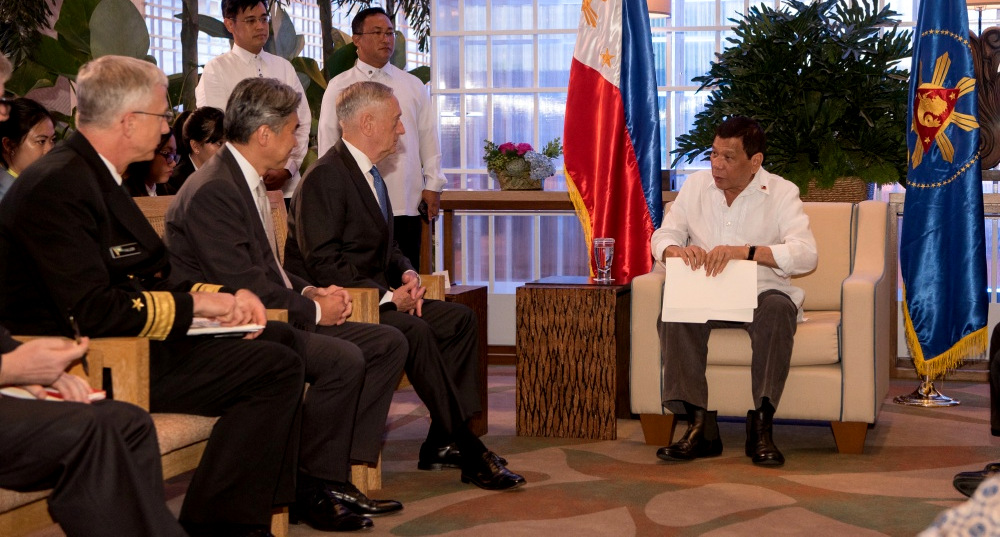
Defense Secretary James Mattis meets with the president of the Philippines, Rodrigo Duterte, during the Association of Southeast Asian Nations Defense Ministers (ASEAN) meeting in Clark, Philippines on Oct. 24, 2017. (Photo: DVIDS)
The operation comes to light months after the conclusion of the bloody siege of Marawi, a now-pulverized city in the southernmost island of Mindanao that became the scene of a ruinous counterinsurgency campaign by the Armed Forces of the Philippines (AFP) against hundreds of alleged “Islamic State affiliates” of the Maute and Abu Sayyaf groups.
The campaign entailed the declaration of martial law in Mindanao until the end of 2018, the displacement of thousands of families, and the deployment of U.S. Special Forces to the city as advisors and drone operators assisting the Philippine military.
A recent video released by Philippine Army Special Operations Command, highlighted by Interaksyon, noted the clear evidence of U.S. logistical support to the AFP campaign, including M4s rifle optics, PEQ-2 laser designators, machine guns, grenade launchers and Harris tactical radio systems.
Watch | The Philippine Army Special Operations Command’s Battle of Marawi
The U.S. participation was seen by the country’s leftists as proof of President Rodrigo Duterte’s hypocrisy, exposing his angry anti-U.S. statements and pledges to align with regional powerhouses such as Russia and China as the empty bluster of a U.S. puppet.
A report published for the U.S. Congress last Friday by Lead Inspector General Glenn Fine repeatedly invokes “ISIS-Philippines” as justification for the report while subtly mentioning “other terrorist organizations” that remain unnamed:
OPE-P is described as the comprehensive counterterrorism campaign by the DoD, in coordination with other U.S. Government agencies and international partners, to support the Philippine government and military in their efforts to isolate, degrade, and defeat Islamic State of Iraq and Syria (ISIS) affiliates and other terrorist organizations in the Philippines.”
Critics see the use of the term “other terrorist organizations” as a red flag signaling that the Pentagon’s focus is far from limited to those who are seeking to help establish a global “caliphate” from the Southeast Asian archipelago.
Read more by Elliott Gabriel
- Kerry’s Alleged Talks With Palestinians: Amid Pro-Israeli Stampede by US, A Silent Tug-of-War?
- TeleSUR English’s Day in Facebook ‘Jail’ Raises Doubts About Silicon Valley Hospitality
- Do Korea Talks Reflect Alienation from US Threats of War?
- Tokyo Warns of War: US Wary as Seoul Asserts Itself, Pursues Peace Talks with North
For, Roland Simbulan, a professor at the University of the Philippines and scholar of U.S. military activities in the region, Operation Pacific Eagle represents a new stage in the counterinsurgency against the Maoist guerrillas of the New People’s Army (NPA).
“The Operation Pacific Eagle marks a new era of U.S. military intervention in the Philippines,” Simbulan told MintPress News:
Internally, it is directed against the Philippine left and externally, to use the Philippines as a springboard to reassert U.S. military power in the Pacific. It is Trump’s way of supporting the creeping authoritarianism in the country while using U.S. military forces and assets to make sure that Duterte does not change the U.S. military presence [in relation to] China.”
The Philippine Revolution
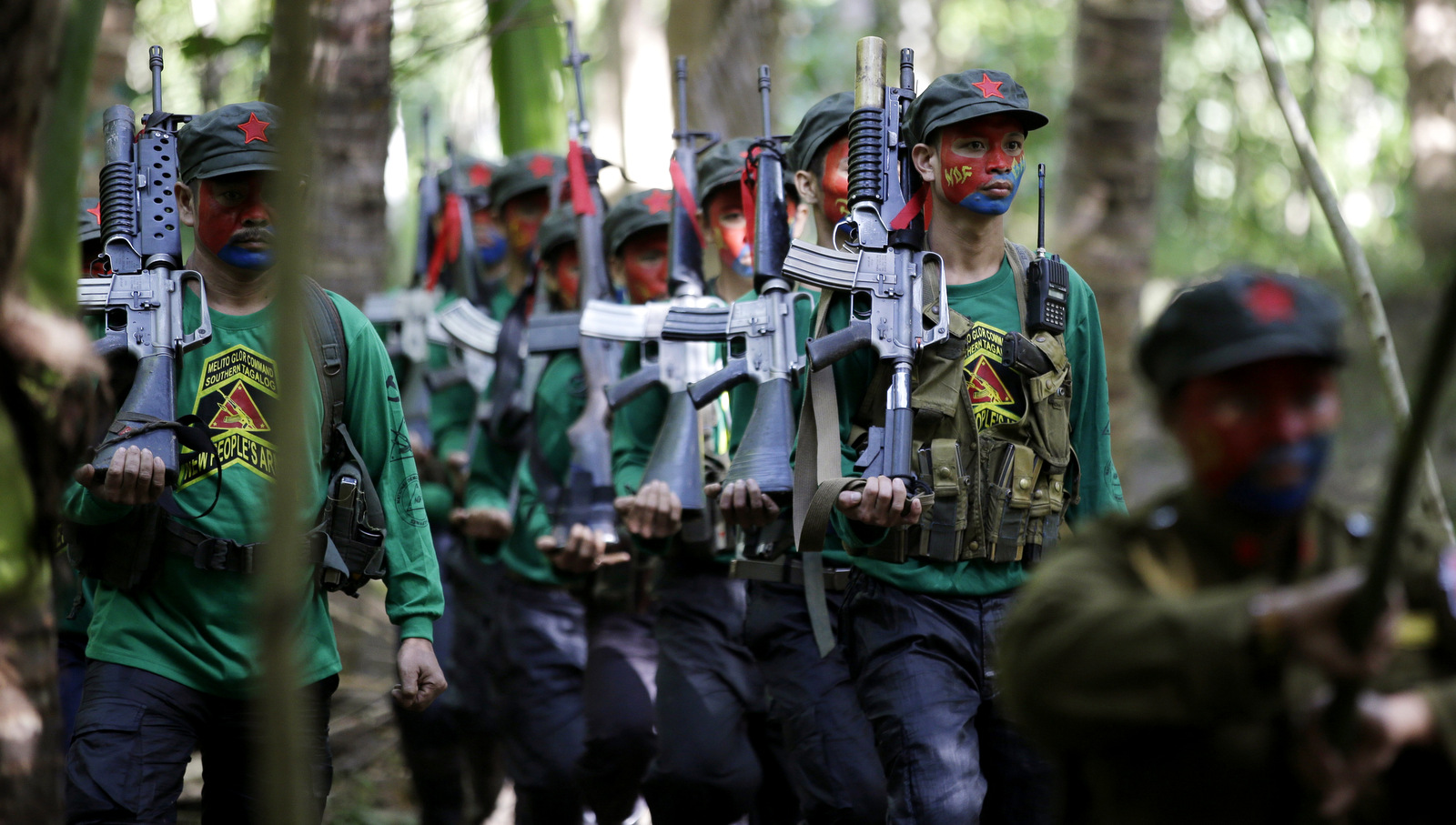
Members of the New People’s Army march during the entry of colors as part of ceremonies before a news conference held at their guerrilla encampment tucked in the harsh wilderness of the Sierra Madre mountains southeast of Manila, Philippines. The group warns that a peace deal with President Rodrigo Duterte’s government is unlikely if he won’t end the Philippines’ treaty alliance with the United States and resist control by other countries, Nov. 23, 2016. (AP/Aaron Favila)
For nearly 50 years, the NPA – affiliated with the Communist Party of the Philippines (CPP) – has waged a prolonged insurgency against successive governments in Manila, which it accuses of serving U.S. imperialist interests rather than the interests of poor people and Indigenous communities in resource-rich rural areas desired by multinational mining firms and local exporters.
Duterte once called himself a “socialist” and “anti-imperialist,” and even expressed sympathies for the red fighters in a manner considered taboo in a country that, for decades under former dictator Ferdinand Marcos, once nursed a single-minded hatred of the left.
Since 1986, however, Manila has taken part in intermittent peace talks with the banned Communist Party of the Philippines (CPP) through the National Democratic Front, an alliance of social movements affiliated with the clandestine party.
While Duterte initially championed the peace process, which hinged on the implementation of an ambitious socio-economic reform agenda, the negotiations were derailed last May after his declaration of martial law in Mindanao.
Watch | Why is there an armed revolution in the Philippines?
Accordingly, the end of last year’s peace talks eventually led to Duterte designating the Philippine communists, both armed and unarmed, as “terrorists.”
“I will follow America, since they say that I am an American boy,” Duterte noted. “OK, granted, I will admit that I am a fascist. I will categorize you already as a terrorist.”
The clandestine party and its military wing have both been included in the official U.S. government list of foreign terrorist organizations since 2002.
Duterte’s accusations came shortly after U.S. President Trump’s visit to Manila for the ASEAN leaders’ summit last November, drawing criticisms that the Philippine president was acting under the direction of his “idol and puppet-master” from Washington.
“Duterte’s martial law against the so-called ‘ISIS’ in Mindanao set a perfect backdrop for the reentry of U.S. troops and their permanent basing in the country without a signed treaty,” the CPP Information Bureau said in a statement released last month:
His termination of the peace negotiations with the National Democratic Front of the Philippines and subsequent declaration of the Communist Party of the Philippines and the New People’s Army as ‘terrorist organizations’ further set the stage. The declaration, which was made specifically in line with the U.S. State Department’s foreign terrorist organizations (FTO) listing, bolstered Duterte access to the U.S.’ budget for overseas contingency operations (OCO), the Pentagon’s bloated ‘anti-terror’ slush fund.”
Mindanao’s riches
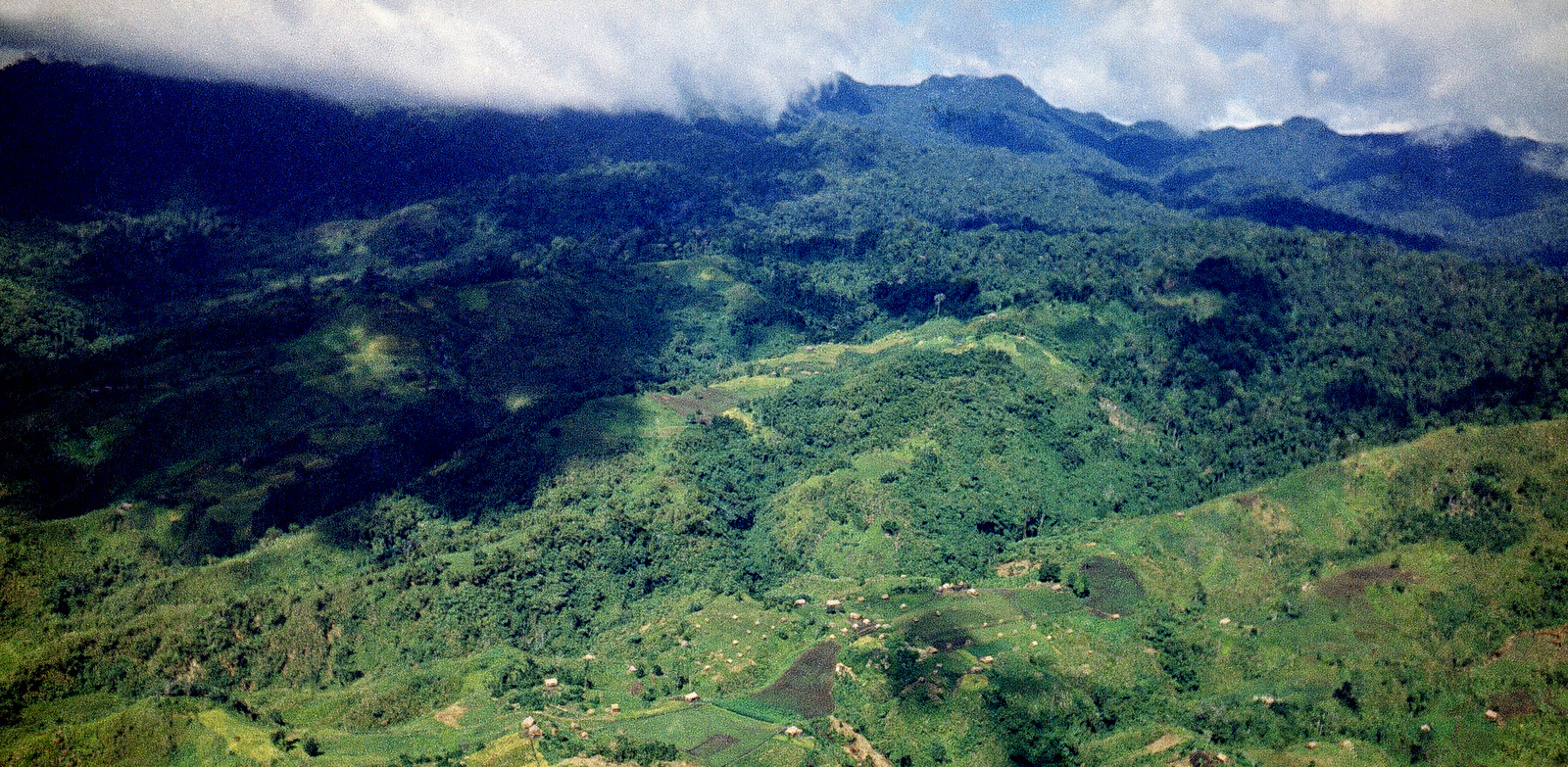
The mountains of the South Cotabato province in the resource-rich Mindanao Island in the southern Philippines. (AP Photo)
The material incentives of the United States government are key to understanding why the U.S. declared Operation Pacific Eagle, according to Jorge “Ka Oris” Madlos, the spokesman for the New People’s Army (NPA) National Operations Command.
“ISIS in the Philippines is more imagined than real,” Ka Oris told MintPress News:
By using the general catchphrase ‘radicalization and violent extremism,’ the U.S. is encompassing all armed groups resistant to its puppet state’s rule, both existing and those bound to emerge due to its interference. In Mindanao, this includes legitimate Moro groups/clans fighting for their ancestral lands and right to self-determination.”
The lush island has long been known for its lucrative natural gas and mineral deposits and its wide tracts of land ideal for large-scale commercial plantations operated by multinational corporations based in the U.S., Ka Oris explains.
Multinationals have also looked covetously at the Liguasan Marsh, a huge and biodiverse complex of rivers, channels, lakes, freshwater marshes and ponds.
Viewed as sacred patrimony for the Maguindanaoan Muslim tribe, the 220,000-hectare marsh was described in U.S. diplomatic cables from 2006, obtained by WikiLeaks, as containing untapped mineral wealth totaling anywhere from $840 billion to $1 trillion.
Manila government officials at the time described the region as a “treasure trove” of mineral resources — including gold, copper, chromites, nickel, manganese, silver, iron ore, lead and zinc. According to subsequent surveys carried out by U.S. oil engineers, the natural gas reserves of Liguasan alone amount to $580 billion.
Watch | Making a Difference in Ligawasan Marsh
“At the same time, the island is also home to robust people’s movements and has a strong presence of armed groups, including the NPA,” Ka Oris notes.
In hopes to advance their demands for self-determination from the distant Manila government, Maguindanaoans have long taken part in armed insurgencies led by groups such as the Moro National Liberation Front (MNLF) and Moro Islamic Liberation Front (MILF) — both groups that faced accusations of terrorism” from Manila and the U.S. Both groups have since signed peace deals and now hope to finalize a law granting autonomy to local elites.
Controversially, Duterte has tied the granting of autonomy to a new push to drastically raise the constitutional ceiling limiting the right of foreign investors to own Philippine land, among other measures that have raised the ire of watchdogs and opposition figures. Filipinos who oppose Duterte see the reform of foreign land ownership laws as key ingredients of a recipe for a return to colonialism in the country.
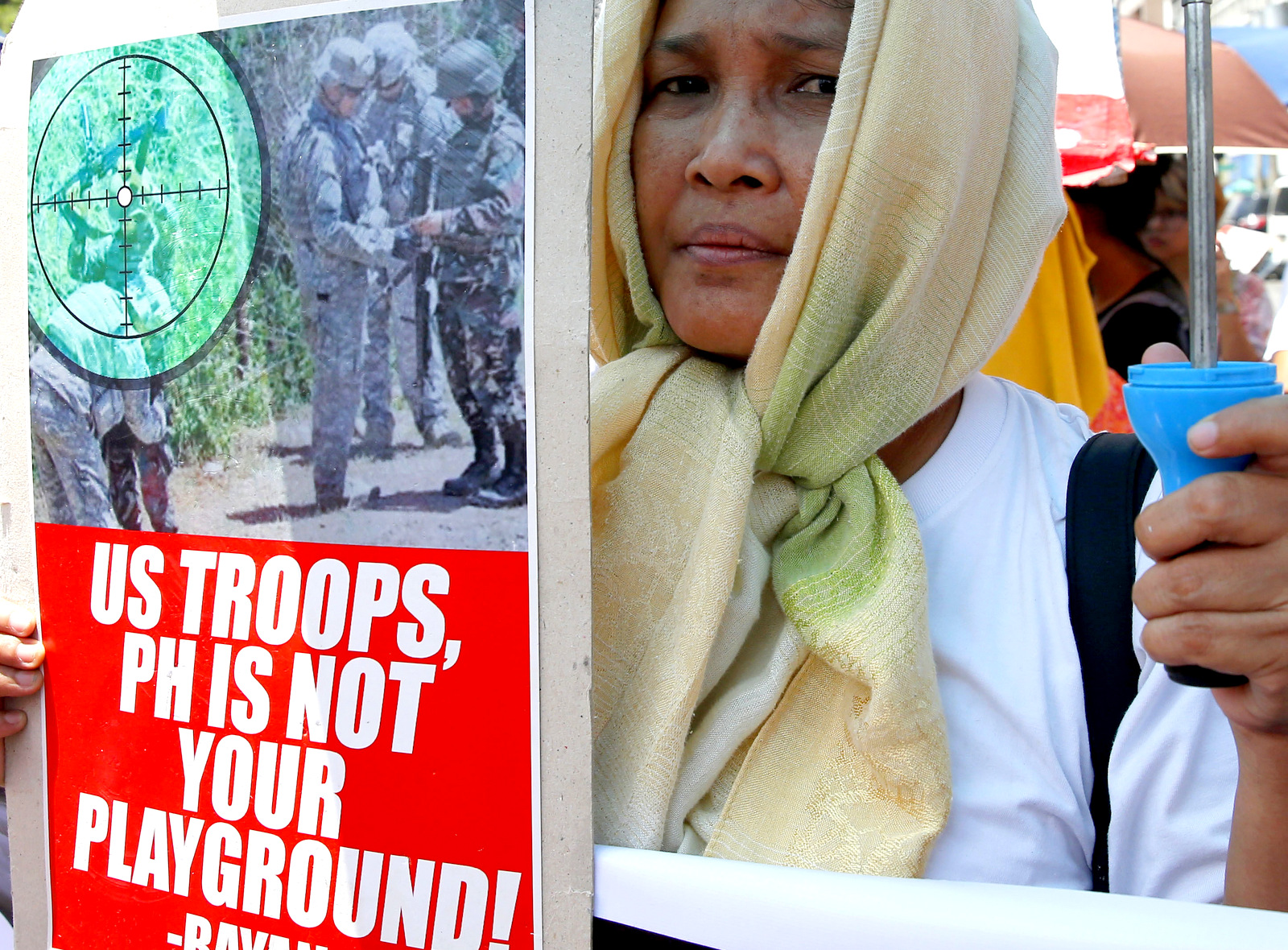
A protester holds a placard during a rally in Manila, Philippines, near the U.S. Embassy to denounce the U.S. military’s role in the battle between government forces and Islamist militants. The protesters also denounced President Rodrigo Duterte’s declaration of martial law in the whole region of Mindanao in southern Philippines. (AP Photo/Bullit Marquez)
Manila also hopes a new law on autonomy can smooth over the lingering rage provoked by Marawi’s destruction. According to Moro advocates, the city’s Islamist insurgency was itself rooted more in a neglect of Moro people’s legitimate interests than in locals’ interest in the ISIS program.
“The U.S. even acknowledges that the Marawi siege may have further complicated the Moro situation in this part of the country,” Ka Oris explained.
Local Moro advocates see recent developments, such as plans to build a second major military camp in the city, as proof that Manila intends to transform Marawi City into a de facto “military reservation” directly owned and operated by the U.S. armed forces. The developments cast new light on the overuse of force against the city’s civilian infrastructure and neighborhoods for the purpose of quelling a relatively small number of Islamist insurgents.
Ka Oris notes:
The U.S. is sure to consider the city as one of its potential bases, as it hosted the main U.S. base in Mindanao in the 1900s (then known as Camp Keithley). Duterte has already displaced almost all its civilian population and is in the process of building a military base there. Resistance, both armed and unarmed, to this latest injustice is bound to intensify.”
Making the Philippines safe for global capitalism
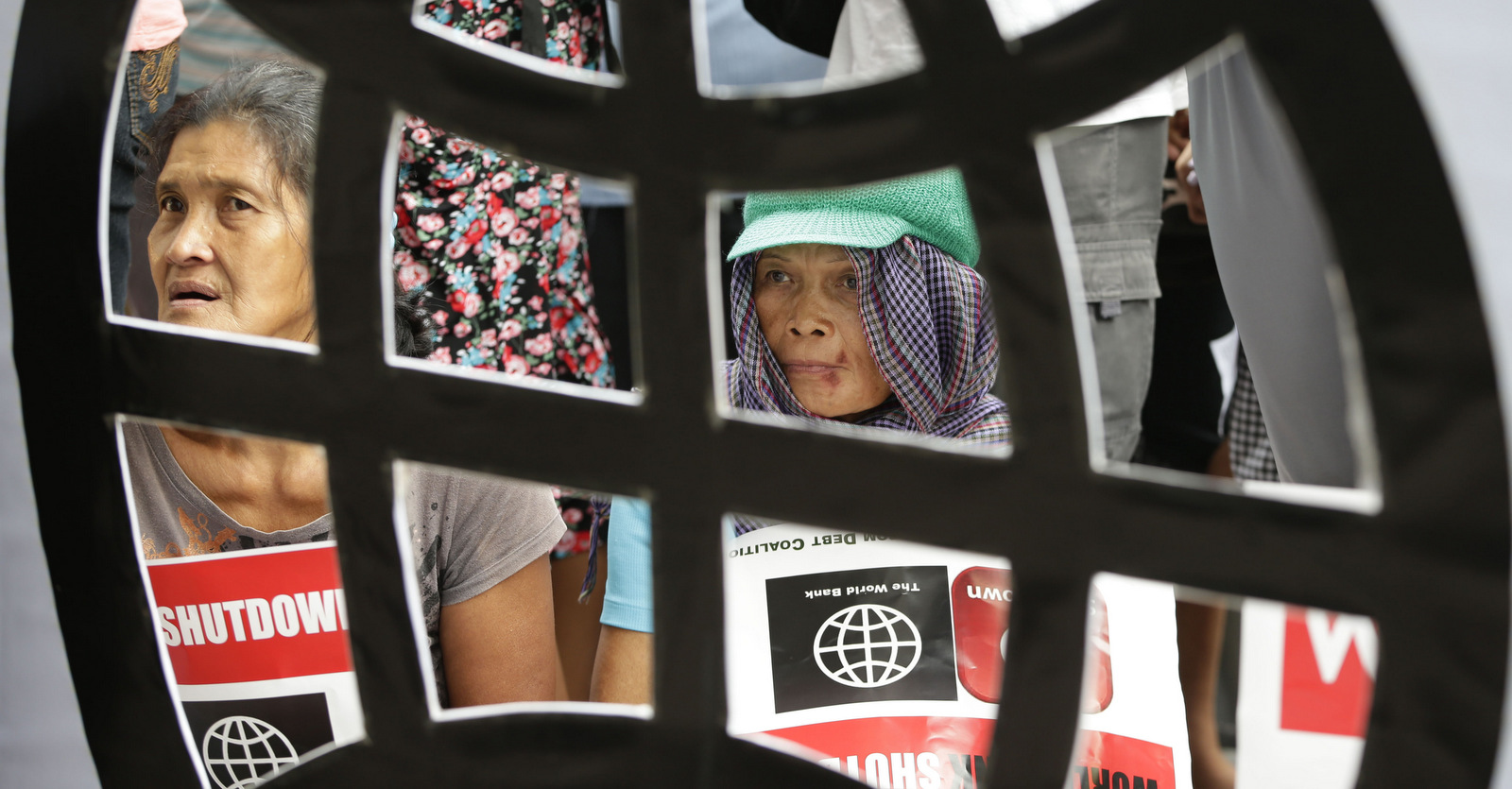
Protesters display placards behind a mock logo of the World Bank outside a hotel near Manila, Philippines to, Oct. 23, 2014. Protesters gathered to coincide with the World Bank consultations with different non-government organizations and civil society groups on the World Bank’s new draft of “safeguards” that was launched in Washington. Protest leaders would later reject the draft and demand policies to ensure real protections for people and the planet.” (AP/Bullit Marquez)
When former dictator Ferdinand Marcos declared martial law in 1972 — ostensibly to contain the communist insurgency of the CPP-NPA and growing unrest in the cities and schools — the neocolonial status of the Philippines was drastically deepened. The country was transformed into a laboratory for neoliberal experiments, free-market policies, special economic zones, and a lifting of protectionist laws under World Bank structural adjustment loan requirements.
U.S. multinational corporations, operating through loyal elites and oligarch clans, gained unprecedented access to the country’s riches — including its banking, petrochemical, construction, telecoms, and mineral extraction industries, among other strategic sectors.
For William I. Robinson, an author and professor at the University of California Santa Barbara, a new period of martial law and militarization would come as little surprise:
Both Trumpism and Duterteism are far-right authoritarian responses to crises of state legitimacy and internecine feuding among the elite. Militarization and authoritarianism in the United States and the Philippines will become more closely linked through Operation Pacific Eagle.”
Even in the past, when Manila abstained from the iron-fisted policies of Duterte, the country’s governance entailed the violent displacement of millions throughout the country and the resultant export of several millions of displaced Filipinos to all corners of the globe as “guest workers” lacking rights in Asia, the Middle East, Europe, North Africa. While women find work as domestic laborers, servers, caregivers, nurses, or hospitality industry workers — where they are often vulnerable to rape, physical assault, and murder — men find hazardous jobs as construction workers and agricultural laborers. Some reports claim that around 6,000 are forced to leave the country to seek work every day.
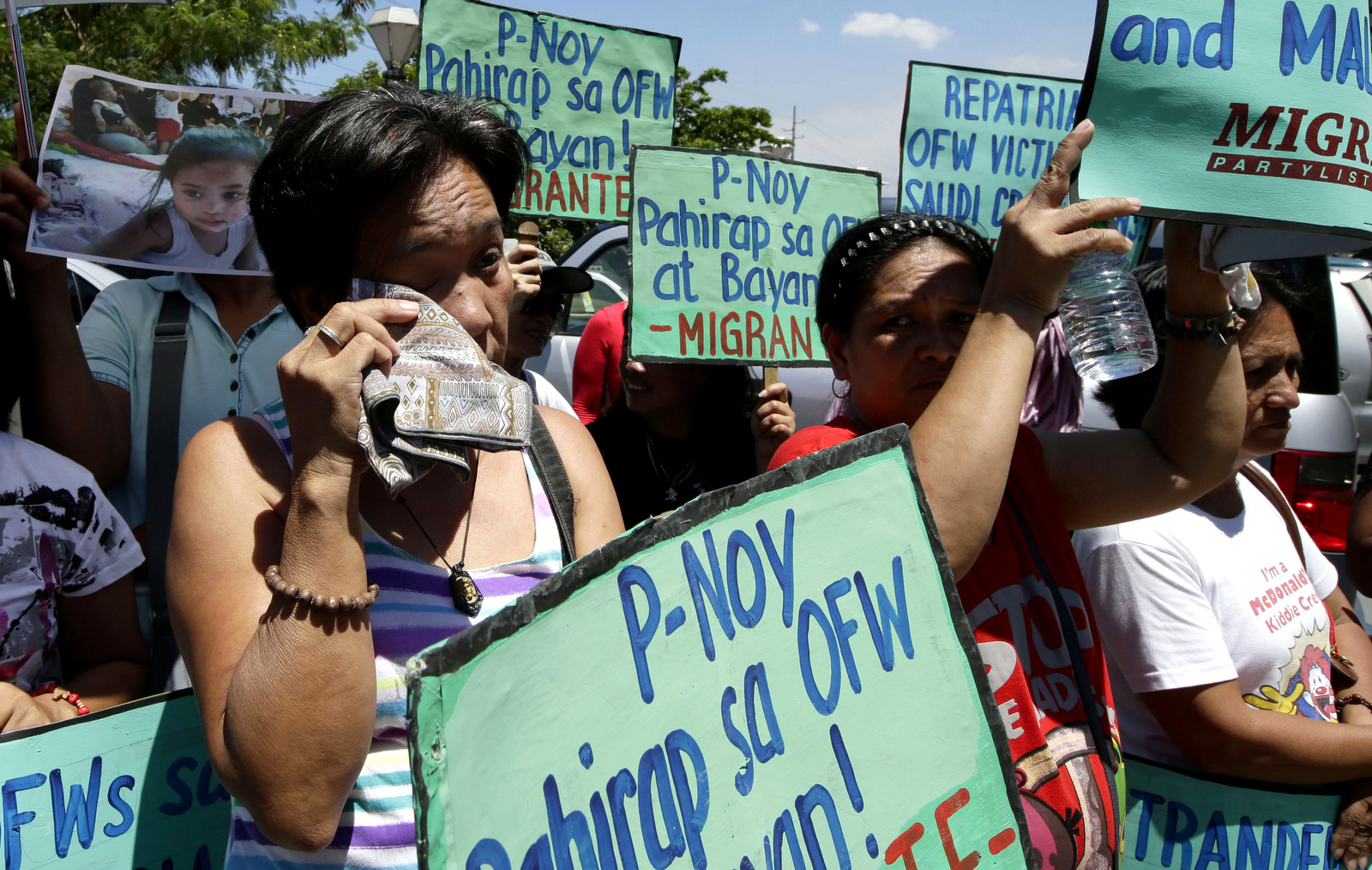
Relatives of OFWs (Overseas Filipino Workers) display placards as they pitch their tent to begin their planned three-day camp-out at the Department of Foreign Affairs in Manila, Philippines, Monday April 29, 2013. The camp-out was organized in sympathy with more than 2,500 who pitched their tents in Jedda, Saudi Arabia to escape alleged crackdowns on undocument overseas workers by the Saudi government. (AP/Bullit Marquez)
“The export of this surplus labor has provided a political escape value to an explosive situation of displacement and mass immiseration,” Robertson told MintPress News.
Likewise, he continues,
Agro-industrial zones have spread through the countryside and the export-industry that first took off in the 1980s has eclipsed national industrial development and has been expanding, as has the transfer of transnational corporate services – call centers, Facebook censors – to the Philippines. These transnational agro-industrial, industrial, and service complexes, along with the global export of Philippine labor, are the face of capitalist globalization in the Philippines.“
Such processes can only accelerate in a “hot-house fashion,” as global markets and the transnational capitalist class seek temporary fixes to their deepening financial worries in resource-rich yet poverty-stricken countries such as the Philippines, Robertson suggests — ensuring that Operation Pacific Eagle will embroil the U.S. in a deeper role policing the internal social turmoil within the country.
Robinson also sees Operation Pacific Eagle as quite similar to Plan Colombia, the 1999-2015 counterinsurgency aid program that saw billions of dollars in weaponry poured into Colombian security forces and paramilitaries for the purpose of destroying the FARC’s left-wing insurgency and, ostensibly, continuing the “war on drugs.”
The New People’s Army is prepared to weather the storm, according to Ka Oris, who sees continued revolutionary rigor as key to the survival of the Filipino people and New People’s Army:
Expanding the mass base, strengthening and expanding the people’s army through trainings and mass recruitments, making sure that revolutionary work is done in a comprehensive manner – [this is how we can] ensure that the guerilla forces and bases can withstand and outlast relentless attacks from enemy forces. These, alongside the study and adaptation of the NPA and the people to U.S. sophisticated weapons, such as surveillance and attack drones, that the local armed forces are already using against civilian communities.”
For the Filipino revolutionaries, it remains unclear as to whether Operation Pacific Eagle marks a new phase in Washington’s militarization of the Philippines. The interventionist policies of the United States have been a constant since the end of the Spanish colonial period when the U.S. military waged a brutal war that claimed around one million lives in the country.
However, Ka Oris notes, Operation Pacific Eagle is clearly consistent with the past administration’s so-called “pivot to the Pacific” and the United States’ push to maintain military supremacy in the Asia-Pacific region. For the Pentagon’s war-planners, the Philippines remains key to their plans for containing an increasingly strong and confident China.
In Part II, we will look at the 1999-2015 U.S. initiative “Plan Colombia” as a template for Operation Pacific Eagle, as well as the use of the operation to continue the encirclement of China by U.S. bases.
Top Photo | A U.S. Marine teaches a Philippine Marine weapon handling techniques during Air Assault Support Exercise 2015-2 at Basa Air Base in Pampanga, Philippines, July 15, 2015. (Photo: U.S. Marine Corp)
Elliott Gabriel is a former staff writer for teleSUR English and a MintPress News contributor based in Quito, Ecuador. He has taken extensive part in advocacy and organizing in the pro-labor, migrant justice and police accountability movements of Southern California and the state’s Central Coast.
The post Operation Pacific Eagle in the Philippines: Washington’s New Colonial War appeared first on MintPress News.
